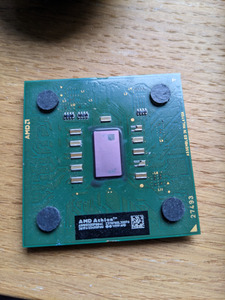First post, by andrean
Greetings!
I've purchased an Athlon XP 2500+ CPU and it arrived in the state as can be seen on the attached picture.
The central chip seems intact, but of the surround 11 smaller compoments, two look like they're broken. I am not sure about the purpose of those surrounding components, and I'd like to know if I should return the chip to the seller, or they do not matter?
So far I've tried the CPU, it posts, and I was able to run a memory test with it, but that's about all I've done with it.
Thanks for any advice!
